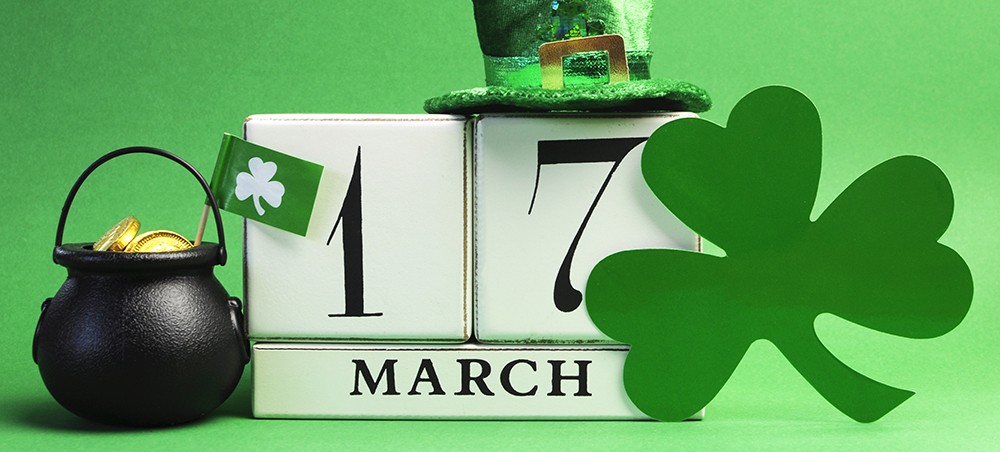With Valentine’s Day just around the corner and US consumers tipped to spend almost $200 each, it’s a timely opportunity to look at some of the biggest dates on the retail calendar for the year ahead.
In US retail, 2020 has commenced with positive consumer sentiment, meaning this year could be a bumper one for the sector following on from exceptional Christmas spending at the end of 2019.
Here are the biggest dates ahead and what they could potentially deliver…
Valentine’s Day – $27.4 billion

This year the National Retail Federation (NRF) has issued some very ‘loved-up’ forecasts for Valentine’s Day. They tip consumers will spend an average of $196.31 each and $27.4 billion collectively.
Top-selling items will include jewelry, cards, candy, clothing, gift cards, and flowers.
St Patrick’s Day – $5.61 billion

The luck of the Irish quickly translates into revenue rises for retailers, with consumers last year spending $5.61 billion on the event, or $40.18 each on St Patrick’s Day.
The NRF noted top purchases included food, beverages, clothing, decorations, candy and greeting cards.
Easter – $18.11 billion

This year Easter falls on April 12, and if last year is anything to go by around $18.11 billion will be spent by the 79 per cent of the population who celebrate this event.
Last year that equated to about $151 average spend for each consumer. Top-selling items were candy, food, gifts, clothing, greeting cards, decorations, and flowers.
Mother’s Day – $25 billion

Mother’s Day on May 10 sees major spending in the retail sector, with consumers last year forking out a record $25 billion collectively, or $196 each.
Top gift purchases by popularity were:
- Greeting cards – $843 million
- Flowers – $2.6 billion
- Special outing – $4.6 billion
- Gift cards – $2.6 billion
- Clothing and accessories – $2.3 billion
- Jewelry – $5.2 billion
- Personal service – $2 billion
- Housewares or gardening tools – $1.1 billion
- Books or CDs – $544 million
- Electronics – $2.2 billion
Father’s Day – $16 billion

Held this year on June 21, Father’s Day is one of the fastest growing holidays in terms of expenditure. In 2019, the NRF noted spending had increased by 70 per cent since 2009, rising by $6.6 billion to equal $16 billion in total.
That equated to an average consumer spend of $139 each, with top gifts including greeting cards, special outings, clothing, gifts cards, and books and CDs.
Independence Day – $6.7 billion

The July 4 Independence Day holiday sees US consumers in a celebration mode, with major purchases including food and patriotic items.
Last year the NRF put total expenditure on food at $6.7 billion, with each consumer spending an average of $73.33.
Back to class – $80.7 billion

Between children heading back to school and tertiary students heading back to college, ‘back to class’ spending from mid-August is one of the biggest periods of the year in retail.
In 2019, the NRF put total expenditure at $80.7 billion, with average household spending for back to school estimated at $696.70 each, and average household spending for college at $976.78.
School supplies, clothing and accessories, shoes and electronics are the major purchase items for back to school, while back to college sees spending on school supplies, clothing and accessories, personal care, shoes, food items, collegiate brand gear, electronics, furnishings, and gift cards.
Winter holiday season – $730.2 billion

Including Black Friday, Cyber Monday, Super Saturday and spanning the six weeks prior to Christmas, the winter holiday season is the most anticipated spending period in US retail each year.
In 2019, sales revenue grew 4.1 per cent to $730.2 billion, with key NRF statistics indicating:
- Online and other non-store sales were up 14.6 per cent year-over-year.
- Grocery and beverage stores were up 2.9 per cent year-over-year.
- Furniture and home furnishings stores were up 2.6 per cent year-over-year.
- Health and personal care stores were up 1.6 per cent year-over-year.
- Building materials and garden supply stores were up 1 per cent year-over-year.
- General merchandise stores were up 0.4 per cent year-over-year.
- Sporting goods stores were down 0.4 per cent year-over-year.
- Clothing and clothing accessory stores were down 1.6 per cent year-over-year.
- Electronics and appliance stores were down 2 per cent year-over-year.
Need help securing your store?
If you’re looking to a busy year ahead and planning to secure your store against shoplifting and loss, you can view our range of security tags here and labels here, or contact our friendly staff for further advice.
